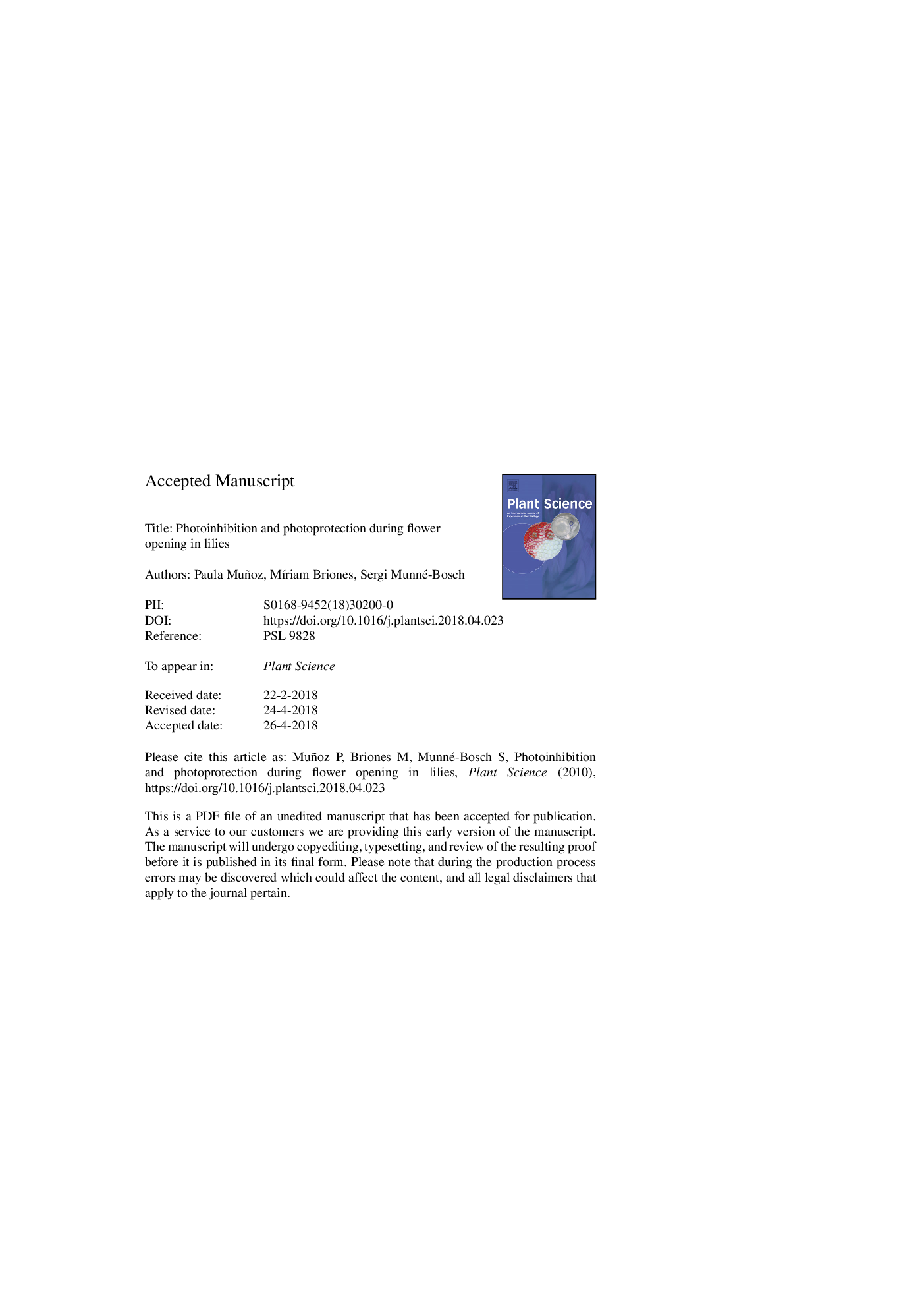| Article ID | Journal | Published Year | Pages | File Type |
|---|---|---|---|---|
| 8356537 | Plant Science | 2018 | 34 Pages |
Abstract
Although most studies to extend vase life in cut flowers have focused on flower senescence thus far, flower opening is a complex process of major biological significance in the determination of flower commercialization. In order to better understand flower opening, this study evaluated to what extent photoinhibition and photo-oxidative stress are associated with tepal de-greening during flower opening in lilies (Lilium “Litouwen”). We estimated the degree of photoinhibition, the capacity for photo- and antioxidant protection, and the extent of lipid peroxidation at four flower opening stages, from closed flowers to anthesis. Additionally, we evaluated to what extent and by which mechanisms related to photo- and antioxidant protection, Promalin® (a combination of gibberellins and cytokinins) delays flower opening. Results showed that chlorophyll content decreased progressively during flower opening, while a sharp decrease of the maximum PSII efficiency (Fv/Fm ratio) was observed just before anthesis. Moreover, content of secondary lipid peroxidation products (malondialdehyde and jasmonic acid) increased just before anthesis, which was preceded by an enhanced production of primary lipid peroxidation products (lipid hydroperoxides). While both tocopherols and tocotrienols (vitamin E) increased during flower opening, β-carotene and xanthophyll content decreased sharply, which may be associated with the sharp decline in the Fv/Fm ratio before anthesis. Flowers treated with Promalin®, which showed delayed opening, experienced transient increases of lipid hydroperoxide and jasmonic acid contents at early stages of flower opening, together with reduced vitamin E and malondialdehyde contents just prior to anthesis. We conclude that the extent of photoinhibition, the capacity of photo- and antioxidant protection and the production of primary and secondary products of lipid peroxidation are finely controlled in a time-dependent manner to allow a correct development of lily flowers.
Related Topics
Life Sciences
Agricultural and Biological Sciences
Plant Science
Authors
Paula Muñoz, MÃriam Briones, Sergi Munné-Bosch,
